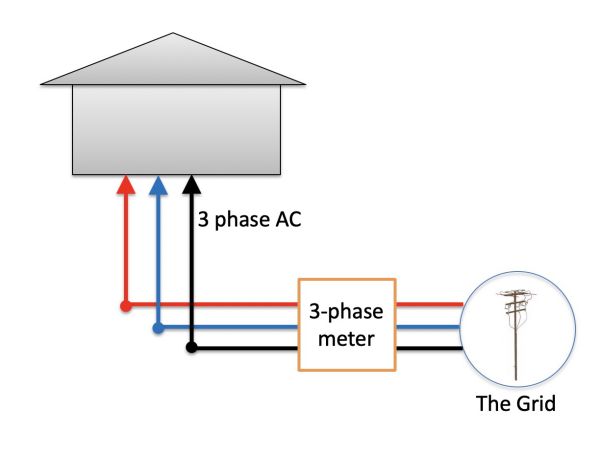What is a Three phase solar inverter?
The three phase solar inverter is a type of inverter used in solar power systems to convert the DC (direct current) electricity generated by solar panels into AC (alternating current) electricity suitable for use in homes or businesses.
The term “three-phase” refers to the type of electrical system in which the inverter operates. In a Three-phase system, there are three separate lines or phases that are offset from each other by 120 degrees, resulting in a more balanced and efficient distribution of power.
These inverters are typically used in commercial or industrial solar installations where larger amounts of electricity are generated and consumed. They are designed to handle higher voltages and power capacities than single-phase inverters, making them suitable for larger solar arrays.
How Three phase solar inverters work
Here’s a simplified explanation of how Three-phase solar inverters work:
DC to AC conversion: The solar panels generate DC power when exposed to sunlight. This DC power is fed into the Three phase solar inverter.
MPPT tracking: The inverter performs Maximum Power Point Tracking (MPPT), which optimises the power output of the solar panels by determining the voltage and current combination that produces the maximum power output.
Inverter: The DC power is converted to AC power by electronic components such as IGBTs (Insulated Gate Bipolar Transistors) or MOSFETs (Metal-Oxide-Semiconductor Field-Effect Transistors).
Grid synchronisation: The inverter constantly monitors the grid voltage and frequency to ensure synchronisation with the utility grid.
Power control: The inverter adjusts the power output based on the electrical load requirements and available solar energy.
Grid connection and monitoring: The Three phase solar inverter is connected to the utility grid, allowing excess power to be exported to the grid or drawn from the grid when needed.
Protection and safety features: Three-phase solar inverters are equipped with various protection mechanisms, including anti-islanding protection, overvoltage protection and undervoltage protection.
Advanced features of Three phase solar inverter
1. Multiple MPPT inputs: Many Three phase inverters offer multiple Maximum Power Point Tracking (MPPT) inputs, allowing the connection of multiple strings of solar panels with different orientations or shading conditions.
2. Reactive power control: Some Three phase inverters offer advanced reactive power control. This feature allows the inverter to actively manage the reactive power flow, ensuring power factor correction and grid stability. It allows better control and compliance with grid regulations.
3. Anti-islanding protection: Inverters with anti-islanding protection feature advanced safety mechanisms that detect abnormal grid conditions, such as power outages, and automatically disconnect the solar system from the grid. This protects utility workers from electrical hazards during maintenance or repairs.
4. Remote monitoring and control: Many Three-phase solar inverters have built-in communication capabilities that allow remote monitoring and control of the system.
5. Grid support functions: Advanced Three phase inverters can provide grid support by regulating voltage and frequency. This is particularly useful in grid-connected systems, where the inverter can actively stabilise voltage fluctuations and help balance the grid.
6. Advanced network communication protocols: In addition to remote monitoring and control, some Three phase inverters support advanced communication protocols such as Modbus or Ethernet, enabling seamless integration with other monitoring systems or energy management platforms.
7. Integration with Energy Storage Systems: With the growing popularity of energy storage solutions, some Three phase solar inverters offer integration options for battery storage systems.
Post time: Aug-28-2023
